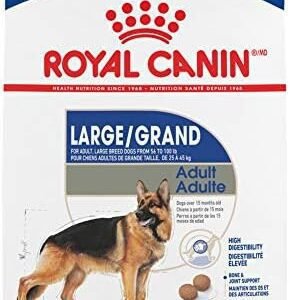Did you know that nearly 73% of dogs treated with Reconcile chewable tablets see a significant improvement in separation anxiety? This is in comparison to just 51% with behavior modification alone. This amazing statistic highlights the pivotal role of effective anxiety treatments. They ensure our furry friends remain calm and happy. Reconcile for dogs is a powerful solution that employs fluoxetine hydrochloride. It’s an SSRI (Selective Serotonin Reuptake Inhibitor) aimed at tackling anxiety issues, especially separation anxiety. It enables dogs to live a life free from distress.
This article aims to shed light on canine separation anxiety, helping you recognize the signs and symptoms. We will dive into Reconcile’s mechanism of action. Through evaluating the benefits of this anxiety treatment, we provide guidance on how to administer it. Along with potential side effects and important considerations, our goal is to arm dog owners with the knowledge needed. This way, you can ensure better behavioral therapy for your dog. Join us as we explore reconciliation techniques for anxious dogs, making a noticeable difference in their wellbeing.
Key Takeaways
- Reconcile chewable tablets significantly improve canine separation anxiety symptoms.
- Fluoxetine hydrochloride, the active ingredient, targets serotonin levels in dogs’ brains.
- Combining Reconcile with behavior modification training yields faster results.
- Some dogs may show improvements within a week, while others may take up to 8 weeks.
- Potential side effects include weight loss, calmness, and in rare cases, seizures.
- A thorough examination is essential before administering Reconcile to rule out other behavioral issues.
Table of Contents
Understanding Canine Separation Anxiety
Separation anxiety in dogs is a distressing condition that occurs when they’re left alone. It leads to problematic behaviors, showing a dog’s need for human company. These behaviors demonstrate their difficulty in coping with absence. This condition severely affects their health and happiness.
About 17 percent of dogs in the U.S. suffer from this condition. Symptoms like chewing, barking, or pacing often begin within 30 minutes of an owner leaving. These signs show the strong bond dogs form with their owners. They highlight how separation can profoundly affect them.
Dogs from young adults to middle age are most at risk. Studies indicate that over half will experience separation stress in their lives. Addressing this requires combining medications and behavior strategies. This dual approach offers the best chance of improving their quality of life.

For treatment, vets commonly prescribe drugs like Fluoxetine or clomipramine. These help ease the anxiety symptoms, aiding in the dog’s recovery. Combining medications with behavior modification boosts treatment success. This shows that a comprehensive plan is crucial for tackling canine separation anxiety.
Signs and Symptoms of Separation Anxiety
Dogs with separation anxiety display a range of distress signals. Acknowledging these is key to help them. Symptoms include:
- Destructive behaviors such as chewing or clawing furniture
- Vocalization, including excessive barking and howling
- Potty accidents in the house, even in house-trained dogs
- Heavy drooling and pacing around the home
- Trembling, panting, and lip-licking
- Yawning and seeking attention from their owners
Some may exhibit mild symptoms, like soft whimpering or minor drooling. Contrastingly, intense vocalization and desperate escape efforts signify severe cases. The individual dog’s temperament and response to environmental shifts play a role.
In some scenarios, dog behavior issues worsen due to certain triggers. These can be life-altering events like a family member leaving or job changes. Such significant transitions, including rehoming or ownership change, deeply affect dogs.
Spotting these early signs is crucial. Without attention, separation anxiety can lead to severe stress. This is shown through non-stop barking, destructive behavior, and loss of appetite. A vet’s consultation is vital to exclude health-related causes behind these behaviors.
| Symptom | Mild Anxiety | Severe Anxiety |
|---|---|---|
| Vocalization | Occasional whimpering | Intense barking or howling |
| Destructive Behavior | Minor chewing of items | Severe damage to furniture |
| Physical Signs | Light drooling, slight pacing | Excessive salivation, relentless pacing |
| Elimination Issues | Occasional indoor accidents | Consistent accidents, even when trained |
Addressing separation anxiety is pivotal in reducing pet distress. Implementing behavioral changes and adjusting their environment can bring significant relief.
What is Reconcile for Dogs?
Reconcile for dogs is a chewable tablet packed with fluoxetine hydrochloride, an SSRI. The FDA has approved it for treating canine separation anxiety. By boosting serotonin levels, it directly influences dogs’ behavior, enhancing their training receptiveness.
This treatment option enjoys a high rating of 4.73 from 11 reviews, indicating many dog owners are satisfied. It’s vital to work with a vet to tailor the treatment to your dog’s needs.
Combined with behavioral therapy, Fluoxetine can show improvements quickly, often within a week. Yet, a full response may require up to eight weeks. Stopping the medication without a vet’s advice can have severe side effects, like sleepiness or decreased appetite.
Administering Reconcile correctly is imperative to avoid overdosing risks. Keeping the medication out of reach from children and pets is essential. Used properly, Reconcile is a significant aid in managing dogs’ behavioral issues.
- Anxiety Relief for Dogs: Our specially formulated calming dog treats provide fast-acting anxiety relief for dogs, helpin…
- Separation Anxiety Pet Aid: Effectively combat common stress responses like excessive barking and scratching. Perfect fo…
- Composure Dog Calming Chews: Enhance your dog’s composure with our melatonin hemp calming chews, designed to soothe nerv…

The Mode of Action of Reconcile
Understanding Reconcile’s mode of action sheds light on its success in managing canine anxiety. It is primarily a selective serotonin reuptake inhibitor (SSRI). By blocking serotonin’s reabsorption, it enhances neurotransmitter activity. This boost in serotonin in the brain helps calm dogs, reducing anxiety behaviors.
How Selective Serotonin Reuptake Inhibitors Work
SSRIs, including Reconcile, stop serotonin from being reabsorbed. Thus, serotonin stays longer in the synaptic cleft. This action better regulates mood, crucial for dogs with anxiety, fear, or compulsive disorders. Fluoxetine, Reconcile’s active component, was effective in treating separation anxiety in dogs over five weeks in studies. Combined with behavior modification, success rates climbed to 72%, highlighting this treatment’s impact.
The Role of Serotonin in Canine Behavior
Serotonin significantly affects a dog’s emotional state. Insufficient serotonin can cause anxiety, aggression, and compulsive actions. Reconcile elevates serotonin levels, promoting emotional strength, better responsiveness to training, and reduced anxiety responses. Studies showed that dogs on fluoxetine greatly improved in handling compulsive actions compared to those on a placebo. This illustrates serotonin’s critical role in not just modifying behavior but improving dogs’ overall well-being.
Benefits of Using Reconcile for Dogs
Reconcile offers various advantages for dogs dealing with anxiety, ensuring a better quality of life. Remarkable improvements are observed, contributing to a happier, healthier canine. Users notice these enhancements across different aspects of their dog’s life.
Improving Canine Behavior
Reconcile plays a crucial role in bettering dog behavior. A study highlighted that 73% of dogs on Reconcile improved in handling separation anxiety. This is a stark difference from the 51% improvement rate in dogs treated with behavior modification alone. The resulting decrease in anxiety minimizes undesirable actions.
This change allows for a more peaceful co-existence between pets and their owners. Marking, barking, and other problematic behaviors are notably reduced.
Enhancing Training Effectiveness
Adding Reconcile to training efforts significantly boosts learning. Dogs in treatment tend to learn commands and behavioral cues more effectively. An impressive 42% of these dogs showed betterment in the initial week of treatment. This compares to just 18% improvement with only behavior modification strategies.
Such enhanced learning fosters quicker mastery of skills and compliance, setting the stage for lasting obedience.
Facilitating Dog Relationship Building
Reconcile’s role in easing anxiety strengthens connections between dogs and owners. Lower stress levels herald more positive exchanges. These improved interactions enhance the bond and overall happiness of both dog and owner. With Reconcile, achieving a deeper companionship based on mutual trust and comfort becomes a reality.
Administering Reconcile for Dogs
Administering Reconcile requires careful attention to dosage and procedures. This ensures effective treatment for canine anxiety. Alongside behavior modification, proper administration is key for success.
Recommended Dosage Chart
The dosage of Reconcile is crucial for its effectiveness and safety. It is generally recommended that dogs receive 1-2 mg/kg once daily. Owners can use a dosage chart to determine the right tablet strength for their dog’s weight:
| Dog Weight (kg) | Recommended Dosage (mg) | Tablet Strength (mg) |
|---|---|---|
| 5 | 5 – 10 | 5 |
| 10 | 10 – 20 | 15 |
| 20 | 20 – 30 | 30 |
| 30 | 30 – 45 | 60 |
How to Give Reconcile Tablets
Giving Reconcile tablets can be done with or without food. This depends on the dog’s preference and digestive needs. To make administration easier, follow these guidelines:
- Ensure the dog is calm and restrained if necessary.
- Hide the tablet in a small piece of food, like cheese or peanut butter.
- Use a gentle and reassuring tone while giving the tablet.
Missed Dose Guidelines
If a dose is forgotten, it’s important to stick to the missed dose protocol. Simply administer the next dose as planned, without doubling up. Here’s what to do if a dosage is missed:
- Wait until the next scheduled time, then give the regular dose.
- Do not give extra tablets to make up for a missed dose.
- Consult your veterinarian if more than one dose is missed or for any questions.
Potential Side Effects of Reconcile
Reconcile is a treatment for dogs with anxiety, but it can lead to side effects. It’s vital to watch dogs closely after starting the medication. While most dogs handle Reconcile without issues, owners must look out for odd behaviors.
- Lethargy
- Decreased appetite
- Gastrointestinal disturbances
- Behavioral changes
Occasionally, more severe issues like seizures or aggression can occur. When these serious side effects appear, getting a vet involved right away is critical. Knowing the side effects ensures the medication’s safe use and aids in conversations with veterinary professionals.
| Side Effect | Frequency of Occurrence | Action Required |
|---|---|---|
| Lethargy | Common | Monitor and consult a vet if persistent |
| Decreased Appetite | Common | Observe for duration; consider veterinary advice if prolonged |
| Gastrointestinal Issues | Common | Monitor; veterinary consultation advised |
| Seizures | Less Common | Immediate veterinary assistance is critical |
| Aggression | Less Episodes | Seek veterinary guidance promptly |
Clear communication with a veterinarian is advised when starting treatment. Understanding side effects of Reconcile allows for preemptive handling of possible dog health concerns. This is key to ensuring the safety and well-being of pets undergoing treatment for anxiety.
Precautions and Considerations
When thinking of using Reconcile for treating dog anxiety, it’s crucial to consider certain precautions. This ensures both safety and effectiveness. Special care is vital, especially for dogs that are pregnant or nursing. The impact of fluoxetine on these dogs still needs more study.
Therefore, talking to a vet before starting Reconcile is key. This step is essential for pet owners to take.
Pregnant and Lactating Dogs
Fluoxetine may have unforeseen effects on pregnant and nursing dogs. The risks may surpass the benefits. This makes veterinarian consultation vital before giving this medication to these dogs.
Adverse Reactions to Monitor
Watching for adverse reactions during treatment is important. Key symptoms to look out for include:
- Seizures
- Changes in appetite
- Unexplained lethargy
- Signs of agitation
If any symptoms arise, getting in touch with a vet right away is crucial. They can offer the necessary guidance.
Interactions with Other Medications
Reconcile might interact negatively with other medications. This is especially true for drugs that affect serotonin levels. These interactions could lead to serious conditions, such as serotonin syndrome. Thus, a full health history and vet discussion before treatment is critical. It helps in avoiding complications.
Comparative Analysis of Reconcile with Similar Drugs
Evaluating Reconcile and similar drugs offers insights for pet owners looking for anxiety treatments. This analysis reveals differences in effectiveness, costs, and side effects between drugs. Such knowledge aids in choosing the right treatment for a dog’s anxiety.
Efficacy of Alternative Treatments
Various medications tackle canine anxiety, with fluoxetine being extensively researched. Fluoxetine is administered in doses of 1 to 2 mg/kg, effectively reducing separation anxiety. This reduction provides data that is valuable in comparing Reconcile to its alternatives.
Cost Comparison and Availability
Anxiety treatment costs vary by medication and dosage. Reconcile offers competitive pricing, making it accessible to pet owners. Conversely, fluoxetine presents a cost-effective option in different dosages, contingent on the dog’s needs. Below is a cost comparison:
| Medication | Typical Dosage | Price Range (Per Month) | Availability |
|---|---|---|---|
| Reconcile | Varies by weight | $40 – $100 | Vet Prescription Required |
| Fluoxetine | 1-2 mg/kg | $30 – $80 | Vet Prescription Required |
| Pemf Treatments | Twice Daily | $50 – $150 | Available through Vet Clinics |
Side Effects of Competing Medications
Each drug has specific potential side effects. Fluoxetine may lead to lethargy, hyperactivity, or appetite loss in dogs. Reconcile’s side effects are typically milder when dosed correctly. Knowing these effects is vital for owners considering anxiety medications for their dogs.
Harmonizing Dog Behavior Through Training
Managing dog behavior through training is crucial, especially for issues like separation anxiety. By employing positive reinforcement techniques, desirable behaviors get encouraged, enhancing the bond between pet and owner. Consistent training sets the stage for better socialization, key in minimizing anxiety and promoting harmonizing canine behavior.
A well-structured training routine makes a significant difference in a dog’s adaptability. While addressing separation anxiety, observing the dog’s behavior is vital. Signs of stress or anxiety, such as ears pulling back or a lowered stance, may be noticed.
- Identify specific overt behaviors to effectively address anxiety.
- Utilize observation-based techniques for accurate behavioral understanding.
- Encourage gradual exposure to anxiety-triggering situations.
Trainers must understand that dogs can reflect their owners’ stress levels. A calm, confident approach aids in stabilizing the dog behavior therapy process. Tailoring training methods to fit each dog’s unique needs and the owner’s lifestyle optimizes outcomes.
| Training Method | Focus | Duration |
|---|---|---|
| Positive Reinforcement | Encouraging desired behaviors | Ongoing |
| Desensitization | Reducing anxiety triggers | Varies by dog |
| Socialization | Promoting interactions with people and other pets | Continuous |
Through strategic training, dog owners aim for harmonized behavior, enhancing their companionship. Regular training sessions not only help with separation anxiety but also foster a nurturing atmosphere for dogs to flourish in.
Techniques for Effective Behavior Modification
Effectively modifying a dog’s behavior involves a range of techniques personalized for each case. Techniques such as desensitization and counter-conditioning are critical in handling dog anxiety. Through desensitization, dogs gradually face the things that scare them but at levels they can handle. Counter-conditioning aims to shift the dog’s emotional response to these stimuli towards something positive.
Interactive toys play a significant role in a dog’s behavior management. They keep dogs busy during tough times, promoting healthy behaviors. The basket-style muzzle is also beneficial. It ensures safety while allowing the dog to pant, drink, and even eat treats.
Journaling your dog’s behavioral patterns is insightful. It helps in identifying triggers and crafting effective strategies. Professional trainers offer customized advice for complex issues like aggression, which can have multiple origins.
Using positive reinforcements and redirecting behavior creates a supportive training environment. For some dogs, veterinary-prescribed calming medications are vital. Drugs like Prozac or Xanax can support behavior modification, reducing anxiety as new behaviors are learned.
Behavior modification isn’t a quick fix; it’s a long-term commitment. Seeing meaningful change requires time, dedication, and regular health checks, especially for medicated dogs.
| Technique | Description | Purpose |
|---|---|---|
| Desensitization | Gradual exposure to triggers at a controlled level | Reduce anxiety response |
| Counter-conditioning | Changing emotional responses to stimuli | Develop positive associations |
| Positive reinforcement | Rewarding desired behaviors | Encourage repetition of good behavior |
| Redirection | Diverting focus from negative behavior | Prevent escalation of issues |
| Use of Muzzles | Safe management of aggressive behavior | Ensure safety during training |
Role of Animal Communication for Dogs
Effective animal communication techniques are essential for resolving canine separation anxiety. These strategies allow owners to understand what their dogs need, enabling better training choices. Through insightful interactions and keen observation of behavioral patterns, pet owners can fine-tune their training approaches. This ensures a stronger connection and better compatibility between dogs and their human families.
Understanding Your Dog’s Needs
It’s vital to spot signs of stress and anxiety in your dog. Canine behaviors when alone often signal deep-seated emotions like fear or frustration. Studies show that there are over 54 different indicators of stress in dogs. For instance, dogs may whine or appear panicked if left by themselves.
Grasping these signals is the first step in creating a supportive atmosphere. This reduces their anxiety and makes them feel safer and more understood.
Adjusting Training Methods
Adjusting dog training methods requires a deep understanding of each dog’s unique temperament and history. It’s important that training sessions account for each canine’s individual needs and reactions. For example, while timid dogs might benefit from softer techniques, more assertive training could work better for others. By personalizing training according to each dog’s need, we significantly improve our chances of mitigating separation anxiety.
| Behavior Type | Common Signs | Recommended Training Approach |
|---|---|---|
| Fearful | Whining, hiding, avoiding | Gentle, positive reinforcement |
| Anxious | Pacing, excessive barking | Structured routines, gradual desensitization |
| Frustrated | Destructive behavior, barking | Interactive toys, increased exercise |
| Calm | Relaxed body language | Positive reinforcement for calm behavior |
By integrating tailored communication methods and adapting training techniques, pet owners can enhance the wellbeing of their dogs. This not only benefits the dogs but also enriches family life. Dynamic and thoughtful training paves the way to overcoming separation anxiety, fostering a happier, healthier relationship between dogs and their owners.
Case Studies and Success Stories
Reconcile success stories prove the profound impact of this medication on dogs with separation anxiety. A study included 242 dogs, carefully observed to measure behavior improvements. It focused on the incidence of improved separation anxiety, using a four-point scoring system.
The findings highlighted a significant change in canine behavior. In the canine behavior case studies, dogs treated with fluoxetine and behavior modification therapy showed reduced severity scores after a month. Full responsiveness was noted after two months, highlighting Reconcile’s role as an effective anxiety treatment.
The “Effectiveness Evaluable Population” showed strong positive behavior trends, based on at least 6 weeks of data. A regression model showed consistent improvement in separation anxiety scores. Notably, it documented gains in reducing destructive behaviors and excessive vocalization.
Analysis also found a correlation between norfluoxetine levels and behavioral scores. This demonstrates a direct relationship between medication levels and clinical improvement. These outcomes underscore Reconcile’s importance in treating canine anxiety effectively. It confirms that a holistic approach is essential, but Reconcile remains a key component in this fight, as evidenced by countless success stories and case studies.
Recommended Comprehensive Treatment Plans
To manage canine separation anxiety effectively, a comprehensive approach is essential. Using Reconcile, which is fluoxetine for dogs, plays a vital part in treatment. It’s dosed at 1-2 mg/kg once daily, tailored to the dog’s needs. To achieve real progress, combining medication with behavioral training and regular vet visits is crucial.
Behavioral training focuses on promoting positive actions and reducing anxiety triggers. When used alongside Reconcile, it can significantly lower separation anxiety scores. In fact, studies indicate that up to 73% of dogs show improvement in an 8-week span. This method doesn’t just medicate symptoms but also targets the root behavioral problems with consistent training.
It’s important to tailor the treatment plan to the dog’s specific situation for effective results. Such customization minimizes Reconcile’s side effects like lethargy or loss of appetite, observed in field studies. Collaborating closely with pet owners, trainers, and vets makes managing separation anxiety more feasible, ensuring a better quality of life for pets and their owners.

























